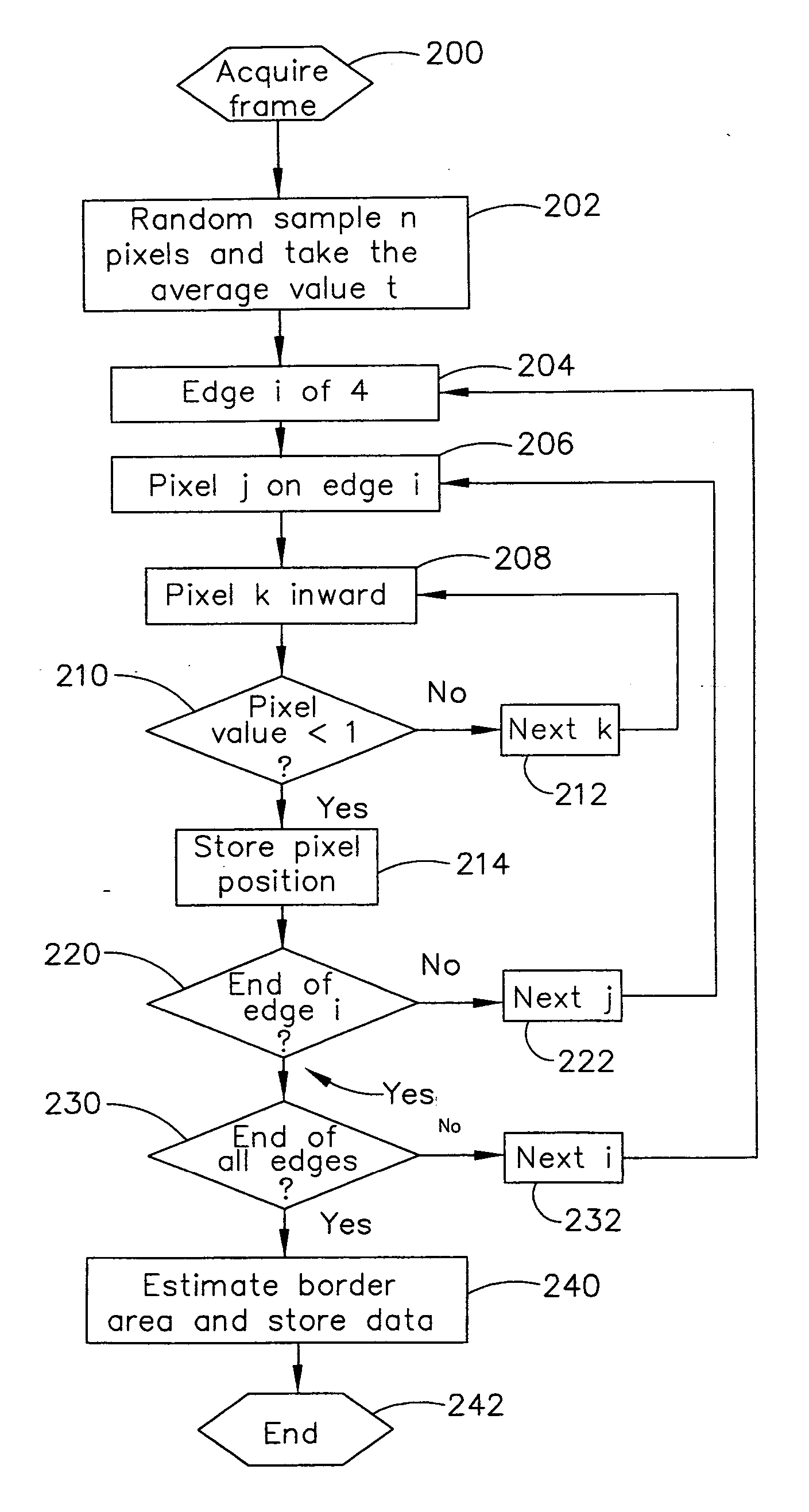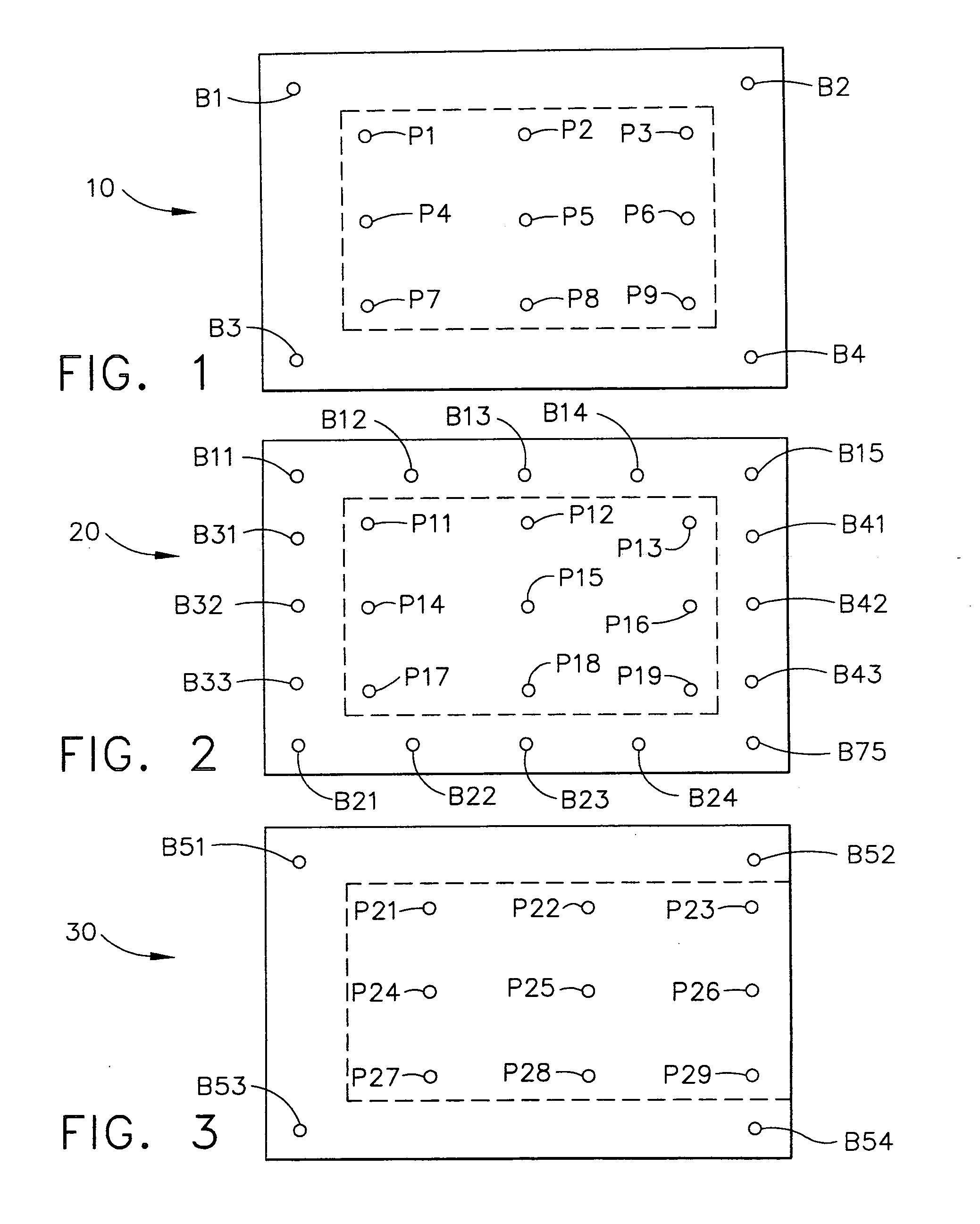Method and apparatus for compensating two-dimensional images for illumination non-uniformities
- Summary
- Abstract
- Description
- Claims
- Application Information
AI Technical Summary
Benefits of technology
Problems solved by technology
Method used
Image
Examples
Embodiment Construction
[0021] Reference will now be made in detail to the one exemplary embodiment of the present invention, an example of which is illustrated in the accompanying drawings, wherein like numerals indicate the same elements throughout the views.
[0022] A digital camera is essentially a scene digitizer, and when used to photograph a document, it can become a document scanner. Using a digital camera as a scanner possesses many advantages over traditional flatbed or sheet fed scanners, including the convenience of upward facing scanning, no requirement for motorized parts in such a scanner, and potentially better scanner performance by use of an array of light-detecting sensors. However, one potential problem in such a scanning system is that the lighting condition may cause variations, or non-uniformity in the illumination, both in the diffuse form and in the specular form. This may occur either when the lighting (or illumination) is provided exclusively by normal ambient light, or by a combi...
PUM
 Login to view more
Login to view more Abstract
Description
Claims
Application Information
 Login to view more
Login to view more - R&D Engineer
- R&D Manager
- IP Professional
- Industry Leading Data Capabilities
- Powerful AI technology
- Patent DNA Extraction
Browse by: Latest US Patents, China's latest patents, Technical Efficacy Thesaurus, Application Domain, Technology Topic.
© 2024 PatSnap. All rights reserved.Legal|Privacy policy|Modern Slavery Act Transparency Statement|Sitemap



